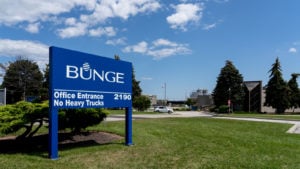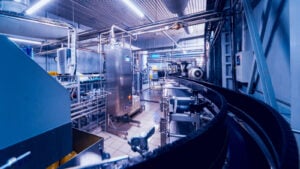In the coming year, the best industrial stocks to buy will have the staying power to resist recessionary headwinds. If you’re looking for new opportunities in 2023, you’ve got to be a little excited about industrial stocks.
A down market stings today but buying stocks when they’re a little beaten down is the quickest way to get outsized returns. Because when the market starts to recover, beaten-down stocks will make up those losses and then some.
While the tech sector and many growth stocks are facing significant challenges, I like industrial stocks in this spot. As nations around the world continue to recover from the coronavirus pandemic, demand for many products is on the rise.
Nations are doubling down on creating as many manufacturing jobs as possible to not only keep unemployment down but to help drive the economy’s recovery. The best industrial stocks to buy recognise this.
Some of the stocks on this list aren’t household names, but my Portfolio Grader tool still gives them high marks. The Portfolio Grader evaluates stocks based on their earnings history, analyst sentiment, buying momentum, performance and other qualitative measurements. Then it ranks the stocks on an “A” through “F” scale.
Here are seven of the best industrial stocks to buy that are getting good marks with the Portfolio Grader now.
The Andersons (ANDE)

Headquartered in Ohio, The Andersons (NASDAQ:ANDE) is an agricultural business that also has its tentacles in commodity merchandising, renewables, and plant nutrients. That’s a lucrative place to be right now, particularly considering the impact of Russia’s invasion of Ukraine, which is a major wheat exporter.
The Andersons got its start in the 1940s with an emphasis on grain transportation and storage. It’s since expanded into retail, fertilizer blending and corn milling.
By the time it went public in the 1990s, The Andersons expanded its portfolio to include rail leasing and railcar repair, as well as grain and liquid storage. It shuttered its retail stores in 2017 but still expects to bring in full-year revenue of more than $15 billion this year.
Third quarter revenue of $4.22 billion far outpaced analysts’ expectations for $3.31 billion. Earnings of 50 cents per share was 13 cents better than the experts predicted.
Bunge (BG)

Bunge (NYSE:BG) traces its roots across the Atlantic to Amsterdam. The company handles the processing and transportation of vegetable oil, as well as grain elevator, milling wheat, corn and rice, and bio-energy production.
The company is continuing to make headway in growing its plant-based protein business to meet the needs of companies that are producing plant-based burgers and other foods.
In December, it announced plans to invest $550 million for a new facility in Morristown, Indiana, to help keep up with the demand. While this is a segment that has seen its share of problems lately, plant-based diets are still popular and should be a successful business for Bunge.
Revenue for the third quarter was $292.27 million, which was a 41% increase from a year ago.
Greif Inc. (GEF)

Based in Ohio, Greif (NYSE:GEF) is a packaging company – its products include steel drums, fiber containers, adhesives for cardboard and cartons, corrugated sheets and more. It’s not a sexy business, but it’s an indispensable one, particularly if you are a manufacturer.
Greif continues to be in growth mode, completing in December its $300 million acquisition of Lee Container Corp., which makes high-performance barrier and conventional blow-molded containers.
The purchase should help Greif’s bottom line. Fiscal Q4 revenue of $1.5 billion was down more than 5% from a year ago, and missed analysts’ estimates by 5.6%.
However, Greif is attractively priced with a price-earnings ratio of less than 11 and a price-sales ratio of 0.5.
Originally published on InvestorPlace.com

